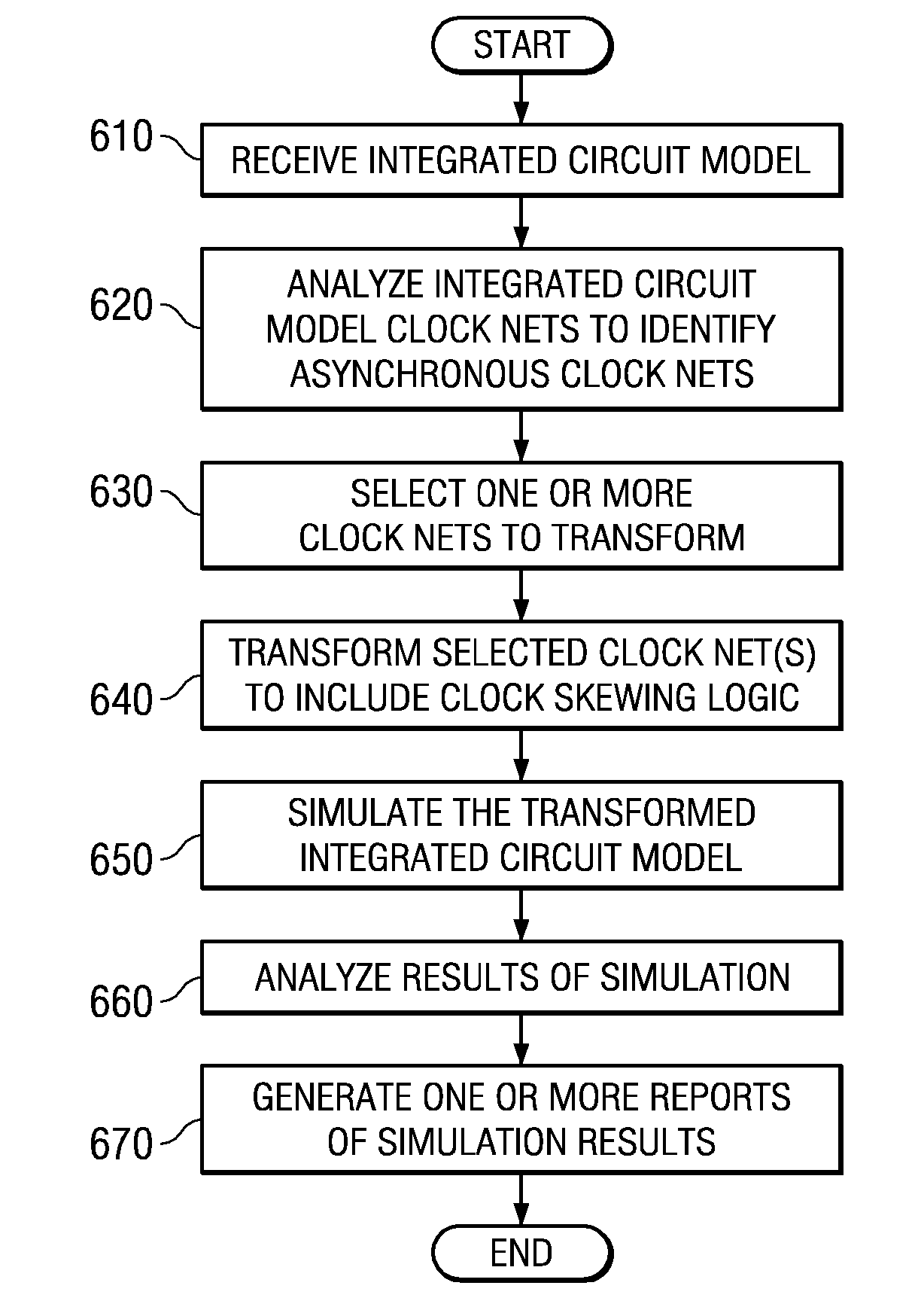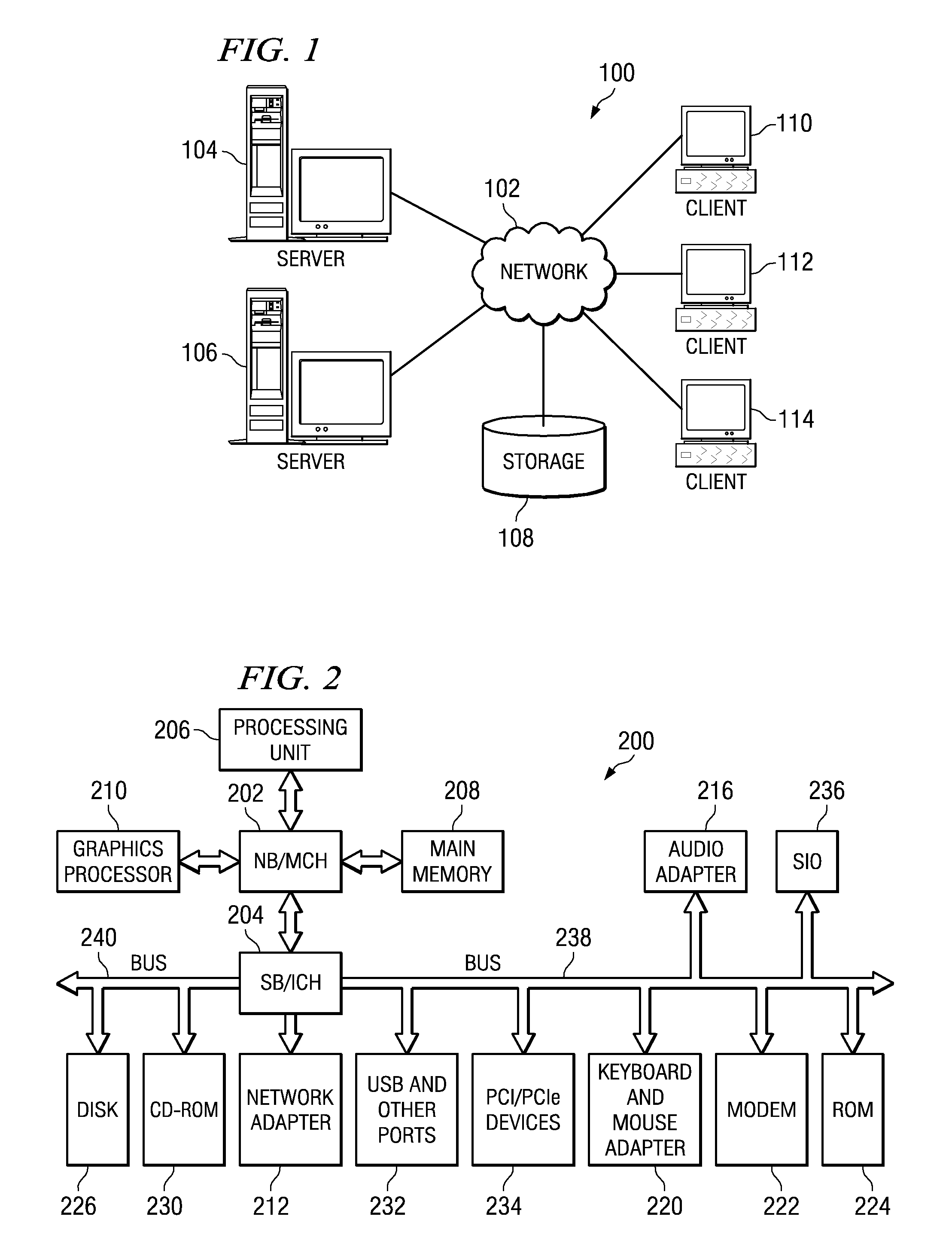Method for asynchronous clock modeling in an integrated circuit simulation
a technology of integrated circuit and clock modeling, applied in the field of data processing system and method, can solve the problems of limited information that may be obtained, static analysis requires less requires extensive time and resources to perform, so as to reduce the delay amount
- Summary
- Abstract
- Description
- Claims
- Application Information
AI Technical Summary
Benefits of technology
Problems solved by technology
Method used
Image
Examples
Embodiment Construction
[0039]The illustrative embodiments provide a mechanism for providing clock skewing logic for implementing asynchronous clock modeling from within an integrated circuit design or model. The mechanisms of the illustrative embodiments allow one or more clock nets to be transformed in an integrated circuit design to include clock skewing logic for simulating asynchronous clocks in the integrated circuit design. As a result, a more accurate simulation of the resulting hardware is achieved as opposed to conventional simulation in which clocks are simulated in a manner that makes them appear to be synchronous.
[0040]The illustrative embodiments may be implemented in a single data processing system or may be distributed across a plurality of data processing systems that are coupled to one another via one or more communications networks. For example, a server computing device may provide circuit model simulation and analysis engines that may be applied to integrated circuit designs or models ...
PUM
 Login to View More
Login to View More Abstract
Description
Claims
Application Information
 Login to View More
Login to View More - R&D
- Intellectual Property
- Life Sciences
- Materials
- Tech Scout
- Unparalleled Data Quality
- Higher Quality Content
- 60% Fewer Hallucinations
Browse by: Latest US Patents, China's latest patents, Technical Efficacy Thesaurus, Application Domain, Technology Topic, Popular Technical Reports.
© 2025 PatSnap. All rights reserved.Legal|Privacy policy|Modern Slavery Act Transparency Statement|Sitemap|About US| Contact US: help@patsnap.com



